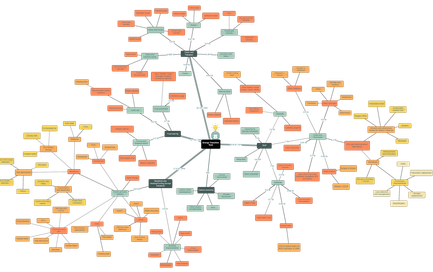
Project Development for Energy Transition: Pt 2

Last time we wrote about the different components that make up project motivation for energy transition infra, BEPTC. How well a project can address each of these components and establish project motivation is often times the driving force behind an equity investor’s initial interest in the project.
But after interest is established, the real diligence begins to determine level and type of development risk, which informs an investor’s view of fit with their investment mandate and the ultimate investment structure (% equity or debt, assetco vs opco vs holdco, etc). Once again, we cite NREL’s framework for the second phase, SROPTCC, or Site, Resources, Offtake, Permits, Technology, Team, Capital:
- Site – Where is the project located? What agreements does it have that ties it to this location? What operating constraints or risks might this site pose?
- Site is often times a huge limiting factor for energy transition infra. A site has to have access to appropriate infrastructure to connect feedstock, offtake, supplies, and equipment. It has to be evaluated for environmental impacts. It has to be surveyed and permitted (which will likely come from multiple regulatory and/or private bodies). It has to balance transferability to other locations (to help the holdco scale) with having a unique advantage over other locations. In energy transition infra, it helps to 1) co-locate multiple projects on a single site to share the risks around a chosen site or 2) partner with a larger stakeholder that already has the appropriate rights and permits to a site. In many cases, an investor will expect to be taken through the process of site selection, so having a documented, systematic method of selecting a site can be very useful.
- Resources – What resources will this project need? Where are those resources? Are those resources secured by contract yet? .
- Resources in energy transition infra can include availability of wind / sunlight, used cooking oil for renewable diesel, or water for hydrogen production…where is the resource that will be turned into product? Who will deliver it and through what logistics? Is this all in writing and/or is there clear visibility into the contract structure? If the feedstock will be purchased from someone else, how much can volume and/or pricing be locked in and for what period of time (vs. life of project?). How much variability might there be in feedstock quality and how will that affect the process? Electricity, gas, catalyst, and all other resources needed for this project outside of the primary ‘feedstock’ are also important to have contracts and/or visibility around.
- Offtake – Who will purchase the product and what terms will they be able to offer for the product?
- This is an incredibly important part of the project. How much demand is there for what is being made – biofuel, renewable electricity, green ethanol, etc.? How much differentiation is there in the product being produced and is that recognized by the market (i.e. can it attract premium pricing)? Similar to Resources, is there clear visibility into contract structure and how much of the volume/pricing/tenure can be locked in? What customer optionality is there and are there existing relationships if not agreements? Outside of the primary product, are there by-products produced and are there offtakers for those products? What sorts of certifications or specifications will the product need to qualify for and how much variability will the process be able to handle?
These first three are crucial to securing the base project economics. Often times, projects come to us when these three are still in flux, which makes modeling the project more challenging and why some more conservative investors prefer agreements to be more or less in place before they engage. At the same time, project developers often find that initiating conversations with investors when agreements are not finalized can provide larger corridor for investors with different risk profiles to come in and help negotiate those agreements to their liking. Balancing the timing of these conversations is an art much more than a science. Sometimes we advise clients to execute LOIs with the appropriate parties, which can formalize a series of conversations into a document that can be shown to an investor but also leave room for further negotiation. This formalization and documentation is important for projects that are “first of a kind” or championing a new set of relationships.
The last four components are ones that every project should also have clear visibility around before talking to investors (and probably do based on work done during the project motivation stage) BUT are not crucial to the economics of the project. Instead, they more so dictate timing and execution risk around a project. Thus, these components can change a little throughout the financing process without major effect. At the same time, much of this work will inform the first three, so it’s unlikely that these components will change drastically anyway.
- Permits – What kind of permits are required for construction and operation? What is the timeline for these permits?
- Technology – What kind of technology is being used? What engineering work is needed to scale the technology up? Has an engineering study been done by a third party?
- Team – Who will be operating the plant? Who will be managing the overall company? Who will be negotiating the contracts? What kinds of agreements will dictate labor allocation between different entities?
- Capital – What kind of capital will be needed at what stages (development, construction, operation)? What investors have funded the holdco or development stage and what role will they play going forward?
Hopefully that provides a clear framework around how projects in the energy transition space are evaluated by investors. For project developers, the broad takeaway is that there are many questions that will get asked around the development / financing process, many of which there won’t be clear answers to from the get-go. The important thing is to have answers at ready and be ready to document and validate those answers at each step.

